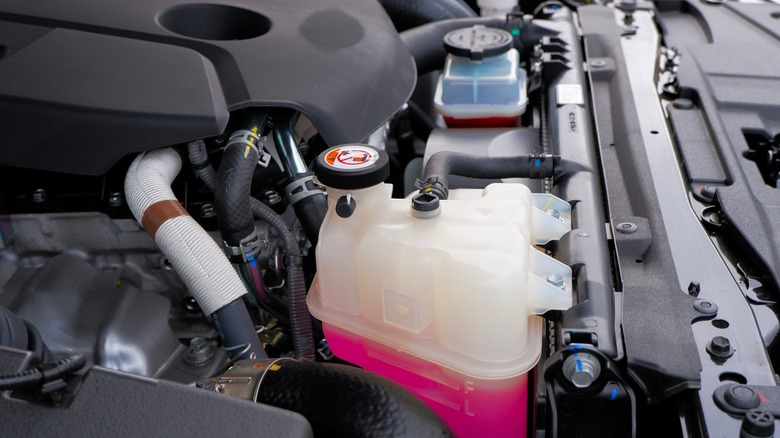
Antifreeze, or coolant, plays a vital role in the performance and longevity of a vehicle’s engine. Among the various types of antifreeze available on the market, the distinct colors signify different chemical formulations and performance characteristics. If you’ve ever glanced at a bottle and wondered, “Which antifreeze is green?” or “What implications do these colors hold?”—then you’ve embarked upon a journey requiring a profound understanding of coolant colors and their corresponding formulas.
The green-colored antifreeze has been a long-standing standard in automotive maintenance, yet the industry has evolved significantly. Traditionally, the green hue is synonymous with older or conventional types of antifreeze, often based on ethylene glycol. This classic formulation utilizes inorganic additives, rendering it effective at inhibiting corrosion and scaling within a vehicle’s cooling system.
However, this understanding merely scratches the surface. To appreciate fully the implications of choosing the right antifreeze, one must delve deeper into the myriad factors influencing coolant performance. The most prevalent formulations include the following categories: IAT (Inorganic Acid Technology), OAT (Organic Acid Technology), and HOAT (Hybrid Organic Acid Technology). Each category represents a unique amalgamation of materials engineered to tackle specific vehicular cooling requirements.
Let us begin with IAT, which is often the source of the familiar green antifreeze. This formula features silicates and phosphates that provide superior corrosion protection for older car models. Vehicles manufactured prior to the late 1990s predominantly relied on IAT formulations. These coolants, although effective, necessitate more frequent changes—approximately every two years or 30,000 miles—due to their limited lifespan.
Transitioning into the late 1990s and early 2000s, manufacturers began to pivot towards OAT formulations. Notably, this transition was initiated by General Motors, which sought to reduce the frequency of coolant changes and enhance engine protection. OAT antifreeze is typically characterized by vibrant hues such as orange or red. It employs organic acids to inhibit corrosion, notably prolonging the life of the coolant itself by offering an interval of up to 150,000 miles or five years under optimal conditions.
Then arises the hybrid blend—HOAT. This formulation combines both organic and inorganic additives, aiming to provide the best of both worlds. HOAT antifreeze is prevalent in many modern vehicles, often represented by colors like yellow or amber. Vehicles employing HOAT coolants can benefit from prolonged protection against corrosion while still enjoying a relatively extended service life.
The color scheme associated with antifreeze is not merely aesthetic; rather, it serves as a significant indicator that requires careful consideration. Each hue—be it green, orange, red, or yellow—denotes different properties and lifespans. Thus, introducing the wrong type of coolant into an engine can lead to catastrophic consequences such as overheating, excessive corrosion, or even complete engine failure.
One common misconception pertains to the idea that all coolants mix seamlessly. In reality, antifreeze colors should not be confused as compatible. The act of mixing different types of coolants can lead to undesirable interactions that result in gel formation, potentially clogging the engine’s cooling passages and leading to overheating. Consequently, it is imperative to consult the vehicle’s owner manual and adhere to the manufacturer’s guidelines regarding coolant type and color.
For those thinking outside the green antifreeze box, there are innovative advancements in coolant technology on the horizon. Recent studies focus on bio-based antifreeze, which poses a promising alternative to traditional formulas. Incorporating organic compounds derived from renewable resources, these environmentally friendly options could revolutionize the industry, paving the way for sustainable automotive practices. While many of these pioneering products are still undergoing trials, they offer a glimpse into a future where vehicle maintenance aligns with ecological responsibility.
Moreover, keep an eye on coolant maintenance practices. Regularly checking coolant levels, inspecting for leaks, and ensuring optimal fluid conditions are paramount. Remember: a vehicle’s cooling system is not solely about the liquid inside; it encompasses the entire arrangement, inclusive of hoses and radiators. Maintaining this complexity requires vigilance and an analytical approach to care.
The choice between antifreeze types and colors is undeniably complex. While green antifreeze remains a staple for many, navigating the myriad options ensures that vehicle owners are making informed choices that prioritize performance without jeopardizing safety. Remember, the color of your antifreeze is more than a mere visual identifier; it reflects the technological advancements designed to enhance your vehicle’s durability.
In summation, understanding which antifreeze is green involves more than a cursory glance at color. It encapsulates an entire philosophy towards automotive care—acknowledging the intricate web of chemical formulations, the lifecycle of fluids, and the importance of using compatible products. By adopting a proactive approach towards coolant selection, you can fortify your engine against the trials of performance, thereby enhancing its longevity and reliability. The road ahead may be complex, but with this insight, you are well on your way to making informed choices that ensure a smooth journey.
